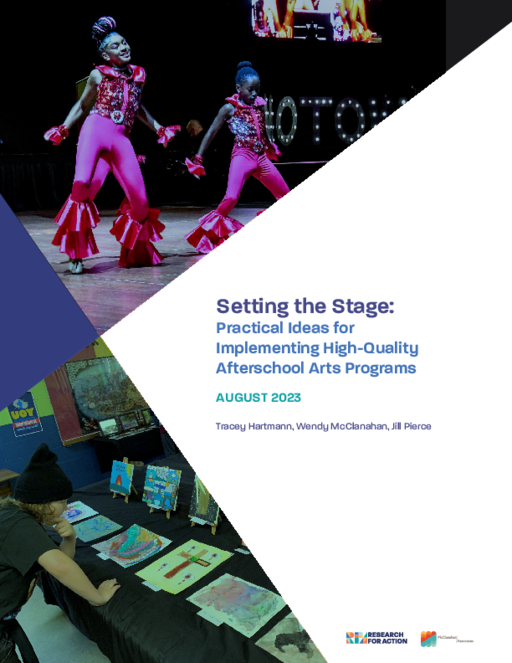- Author(s)
- Tracey A. Hartmann, Wendy S. McClanahan, and Jill Pierce
- Publisher(s)
- Research for Action and McClanahan Associates
Research Approach
The lessons shared in this report draw on multiple sources of data collected during two and a half years of the research, including over 300 interviews and 42 program observations. Interview, focus group, and observational data were coded and analyzed each year of the study.
Analysis was conducted by BGCA to better understand the uniqueness of each model and across the clubs to identify themes common in at least two of the five places. The five clubs were: Metro Atlanta, Austin Area, Tennessee Valley, Orlando, and Children’s Aid NYC.
The findings shared here draw most heavily on themes that emerged in the first two years of the initiative as well as in final interviews with organizational leaders in 2021.
Findings from 2020-21, which focused primarily on lessons learned about virtual programming, were added where relevant, such as youth perspectives on teaching artists.
Interviews, focus groups, and observations included, among other things:
- Youth and caregiver focus groups
- In-person structured program observations
- Interviews with teaching artists, youth development specialists, organization leaders, site leaders, staff, and partners
- Reviews of records on Boys and Girls Clubs’ staffing and program costs, including the costs of salaries or wages of YAI staff; and the costs of program materials, equipment, renovations, field trips, food, and other program expenses
- Reviews of grant reports summarizing the organization’s plans
- Reviews of Boys and Girls Clubs’ arts program and club participation, background and attendance records from January 2019 to March 2020, including categories like sex, age or date of birth, race or ethnicity, and eligibility for free or reduced price lunch


